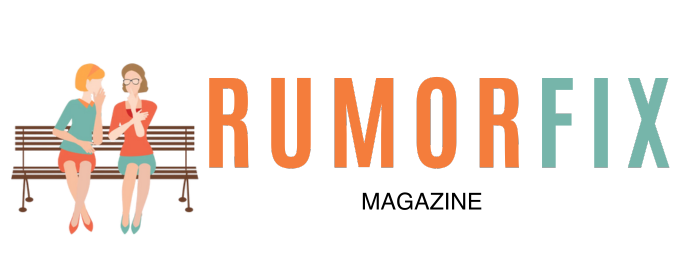
Let me start with a simple provocation: having a board doesn’t guarantee innovation, sometimes the board actively blocks it. Yet when the right people, incentives, and processes align, the board becomes your most powerful innovation amplifier.
In fast-moving sectors, companies that fail to innovate often cite the board as a drag, too conservative, too fixated on quarterly metrics, too disconnected from emerging trends. But I’ve seen the opposite play out: boards that energized entire organizations, challenged assumptions, and pulled executives toward new horizons.
This article will help you build a board that drives innovation. We’ll explore four major levers, composition, mindset, process, and reward structures.
By the end, you should feel equipped to design or re-shape your board so that it’s less of a guardrail and more of a jet engine.
The Foundation ─ Composition That Sparks, Not Stagnates
If innovation is about fresh insight, your board must include fresh insight, diverse in background, experience, mindset. Several studies confirm this: a meta-analysis of board characteristics and firm innovation highlights that boards with heterogeneous skills, tenure profiles, and networks are meaningfully correlated with greater innovation output.
But “diverse” isn’t just a check-the-box label for gender or age. It’s diversity of domains (tech, design, operations, external industries), time horizons (people who think long and short), and even dissenting temperaments (those willing to challenge consensus).
Here is where many founders pause: “How do I actually get those people?” That’s when partnering with a Non-Executive Director Recruitment Agency becomes strategic. A specialized recruitment partner can surface high-caliber independent directors beyond your immediate network, people who bring fresh domain knowledge or an outsider’s lens. (I’ve used them at two scaling companies; the ROI in just accelerating board alignment and speed was well worth the engagement fee).

Cultivating a Mindset of Curiosity and Controlled Risk
Composition gets the seat at the table. Mindset determines whether the body moves.
A board that drives innovation must foster curiosity, challenge orthodoxies, and tolerate “intelligent failure.” Here are four mindset shifts I believe are non-negotiable:
- Question your own wisdom ─ Every tenured director has a mountain of past success. But markets change. Encourage board members to write a “Dear Younger Me” memo – “here’s what I’d do differently now”, and use those as starting points for debate.
- Insist on challenge, not politeness ─ Healthy tension can surface assumptions you didn’t see. EY’s research notes “productive and constructive disagreement among directors can uncover hidden but strongly held assumptions.” Block groupthink by rotating who leads meetings and encouraging “devil’s advocate” assignments.
- Reward experimenters, not just results ─ Innovation timelines are unpredictable. If your board culture only rewards success, you’ll suffocate experimentation. Track “experiment pipeline health” (how many small bets are active) as a KPI, not just revenue from new products.
- Make learning a board agenda item ─ Schedule periodic deep dives (e.g. 90 minutes) where the board studies a new emerging technology, visits a startup, or hosts an external guest speaker. It’s not theater – this builds the literacy your board needs to ask informed questions.
Did you know? A survey by PwC and The Conference Board found that 93% of senior U.S. executives want to replace at least one board member, citing that many directors lack current expertise. That’s a red flag: in times of disruption, stagnating board insight becomes a liability.

Process Architecture ─ Structuring the Board for Innovation
Mindset without process is wishful thinking. If your board has no mechanisms to feed, review, and scale innovation, your best ideas will slip through.
Here’s how I’d build a process backbone:
Innovation Subcommittee or Task Force
Rather than relying on the full board for every idea, establish a smaller innovation or strategy committee. This group meets more frequently, goes deeper on experiments, and then surfaces refined proposals to the full board. (Many public companies already do this.)
Quarterly “Innovation Health” Report
Don’t wait for annual strategy off-sites. Include a standing agenda item: status of new experiments, obstacles encountered, pivot decisions. Grade the risk profile (e.g. base, adjacent, transformational). This keeps innovation on the radar.
Fast-track Decision Windows
Sometimes the board needs to act quickly, e.g., competitor moves, requests to invest in a moonshot. Define a governance shortcut (say, a pre-approved budget envelope) that lets the board rubber-stamp high-value innovation initiatives without full-blown review.
Postmortem Culture
Whenever an innovation fails (as many will), run a structured postmortem: what assumptions were wrong? What can be learned? And maintain a visible lessons log for the board. This normalizes failure as a data point.

Final Thoughts and Next Actions
Building a board that drives innovation is a craft, one that involves strategy, emotional intelligence, incentives, and courage. If I were you, here’s what I’d do in the next month:
- Run a board composition audit using the checklist above
- Engage a non-executive director recruitment agency (or tap your network) to find one “outside thinker”
- Carve out a 90-minute board session for a learning deep-dive into a future domain
- Design or pilot an innovation subcommittee with clear fast-track authority
- Introduce a transparent “lessons from failure” log and make postmortems a ritual
If you do all five, you’ll begin the cultural pivot – from a board that reviews history to a board that creates the future.













